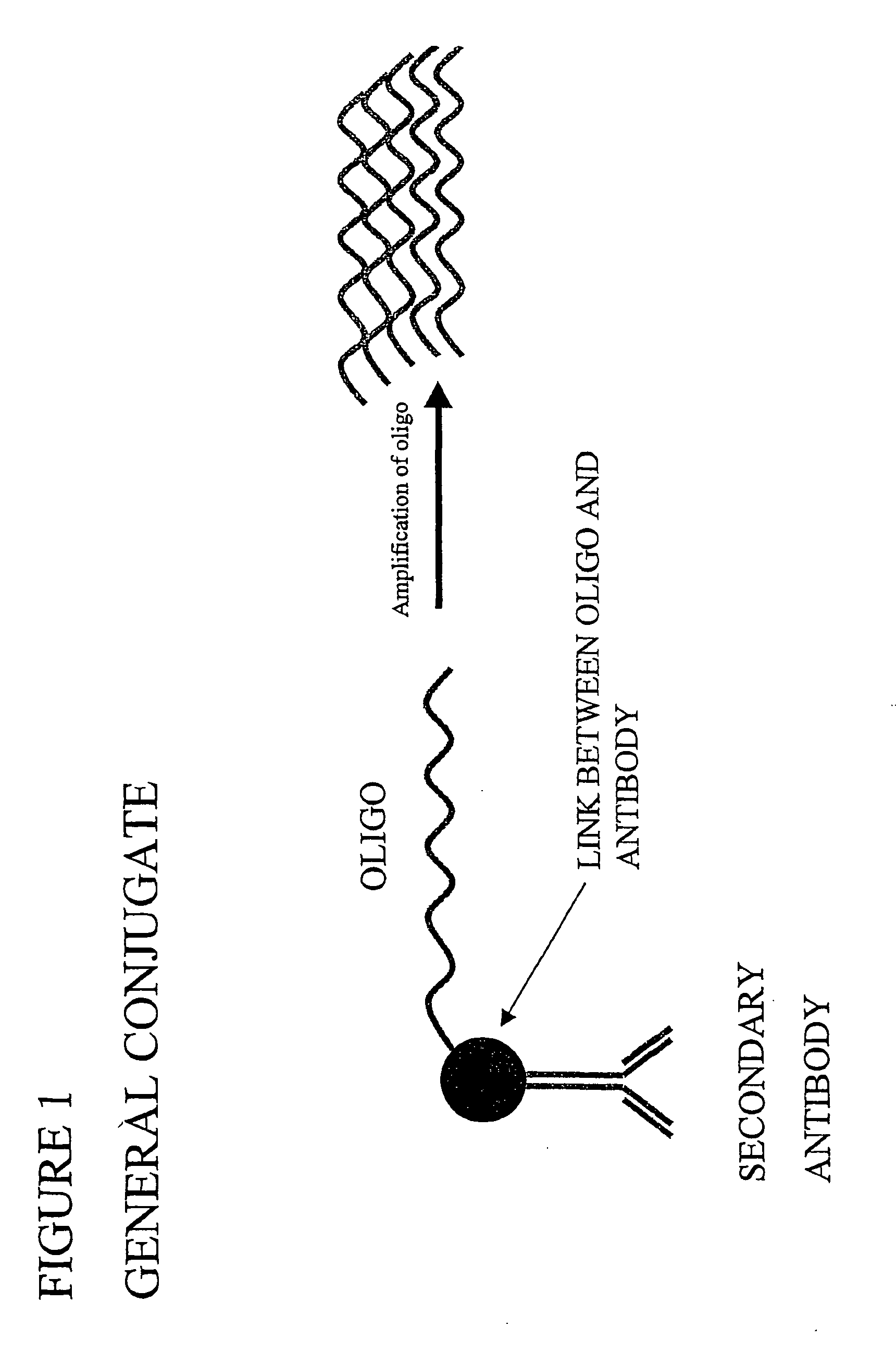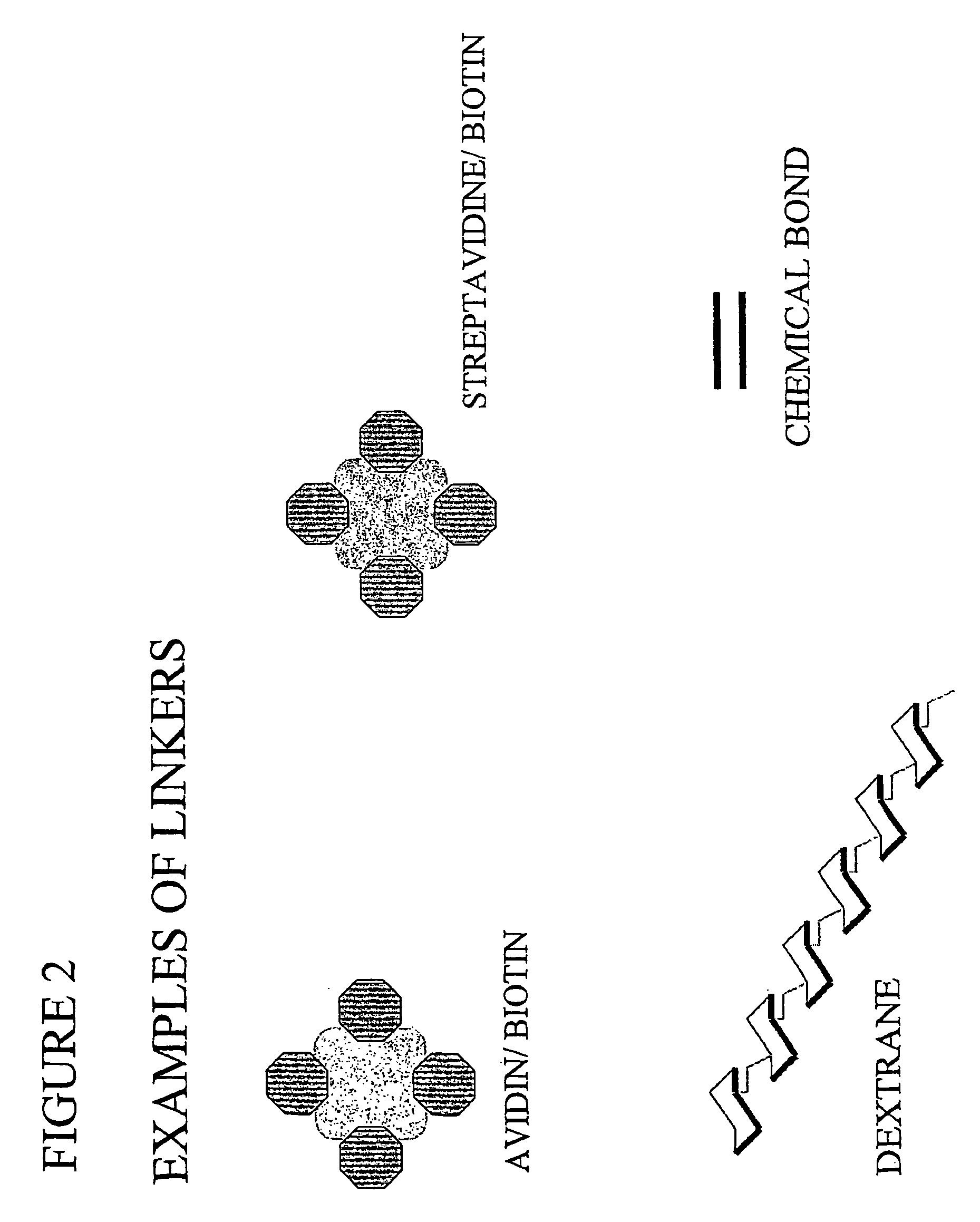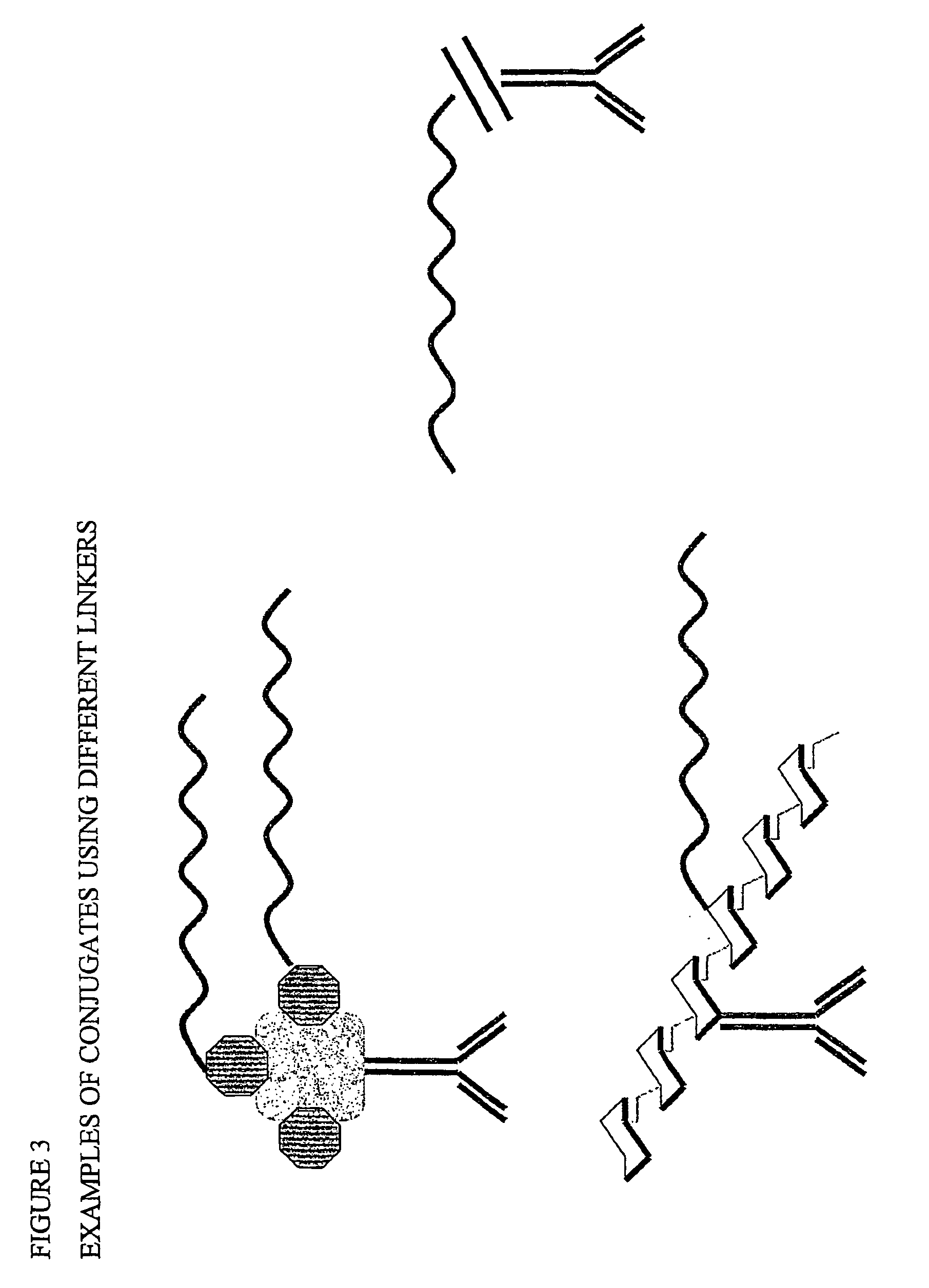Ligand detection method
- Summary
- Abstract
- Description
- Claims
- Application Information
AI Technical Summary
Benefits of technology
Problems solved by technology
Method used
Image
Examples
example 1
Immuno Real-Time NASBA Amplification
[0043] Materials and Reagents
[0044] Microplates: Greiner nr. 650161, 96-well, U-bottom
[0045] Microtubes: MCT-150-C 1.5 ml clear (Axygen Scientific nr. 311-08-051)
[0046] Phosphate Buffered Saline tablets (PBS): 0.01M pH 7.4 (Sigma P-4417)
[0047] Phosphate Buffered Saline with Tween 20 (PBST):
[0048] 0.01M pH 7.4 (Sigma P-3563)
[0049] Blocking Buffer: 0.25 mg / ml Bovine Serum Albumin (BSA) in PBS (Sigma B-6917)
[0050] Antibody Dilution Buffer: 0.01M PBS
[0051] Primary Antibody (1): Goat-anti-Salmonella
[0052] (Europa Bioproducts Ltd., CR7100GAP)
[0053] 10 .mu.g / ml in PBS
[0054] Culture of bacteria (antigen):
[0055] Salmonella cholerasuis subs. cholerasuis Diluted 1:100; 1:100 and 1:10.000 in PBS DSM nr. 4883 (DSMZ: Deutsche Sammlung von Mikroorganismen und Zellkulturen GmbH)
[0056] Primary Antibody (2): Rabbit-anti-Salmonella
[0057] (Europa Bioproducts Ltd., CR7100RP)
[0058] 1 .mu.g / ml in PBS
[0059] Secondary Antibody (ELISA): Goat-anti-Rabbit Alkaline Phosphatas...
example 2
Amiplification of Oligos in Conjugates Containing a Dextran Backbone with ssDNA and Antibody Using Different Sizes of Dextran
[0134] The following conjugates were prepared:
1 Conjugate Oligo Dextran size (mol weight) 641101 Immkort 20 000 641101 Immkort 196 000 641101 Immkort 500 000 641101 Pnsabal 500 000
[0135] Amplification
[0136] Mastermix: 2.times. reagent spheres
[0137] 160 .mu.l diluent
[0138] 27 nasba water
[0139] 28 KCl
[0140] 120 enzyme divided in 2 and added:
[0141] 1) 2.5 Pnasba2, (NASBA primer 2) 10 .mu.M
[0142] 2.5 Immkort 0.1 .mu.M (used as NASBA primer 1)
[0143] 1.25 Pmb2ny, (molecular beacon) 20 .mu.M
[0144] 2) 15 .mu.l P nasba 1+P nasba 2 primermix, 10 .mu.M
[0145] 15 .mu.l of the mastermix was loaded into each well. Samples and conjugates were added and products were detected in a BIO-TEK FL 6000 fluorescence plate reader.
[0146] Results (not shown) indicate that the smaller molecular weight dextrans are best suited for NASBA detection
example 3
Extraction and Amplification of Conjugates
[0147] Extraction of samples:
[0148] 100 .mu.l conjugate was added to 900 .mu.l lysis buffer (NucliSens, pH normal)
[0149] Incubated in a waterbath for 10 minutes at 37.degree. C.
[0150] Conjugate in lysis buffer was added to 50 .mu.l of silica and incubated for 10 minutes inverting the tubes every 2 minutes.
[0151] The samples were loaded onto the Nuclisens Extractor and RNA / DNA was extracted using standard methods.
[0152] Results from the NASBA Amplification:
2 Result Conjugate Containing Additives NASBA F470301-2 Immb3, dx, Ab Tris HCl, NaCl, bronidox Negative F650301-2 Imm5, dx Tris HCl, NaCl Negative F320401 (B) Imm5, dx, Ab Tris HCl, NaCl Negative F230701-1 Imkort, dx, Ab EDTA, RNasin, DMSO Amplified F230701-2 Imkort, dx, Ab EDTA, RNasin, DMSO Amplified F230701-1* Imkort, dx, Ab EDTA, RNasin Amplified F230701-1** Imkort, dx, Ab RNasin, DMSO Amplified F230701-1*** Imkort, dx, Ab EDTA, DMSO Negative Immb3 oligo dx dextran Ab Antibody Bronidox ...
PUM
| Property | Measurement | Unit |
|---|---|---|
| Substance count | aaaaa | aaaaa |
| Biological properties | aaaaa | aaaaa |
| Bond | aaaaa | aaaaa |
Abstract
Description
Claims
Application Information
 Login to View More
Login to View More - R&D
- Intellectual Property
- Life Sciences
- Materials
- Tech Scout
- Unparalleled Data Quality
- Higher Quality Content
- 60% Fewer Hallucinations
Browse by: Latest US Patents, China's latest patents, Technical Efficacy Thesaurus, Application Domain, Technology Topic, Popular Technical Reports.
© 2025 PatSnap. All rights reserved.Legal|Privacy policy|Modern Slavery Act Transparency Statement|Sitemap|About US| Contact US: help@patsnap.com



